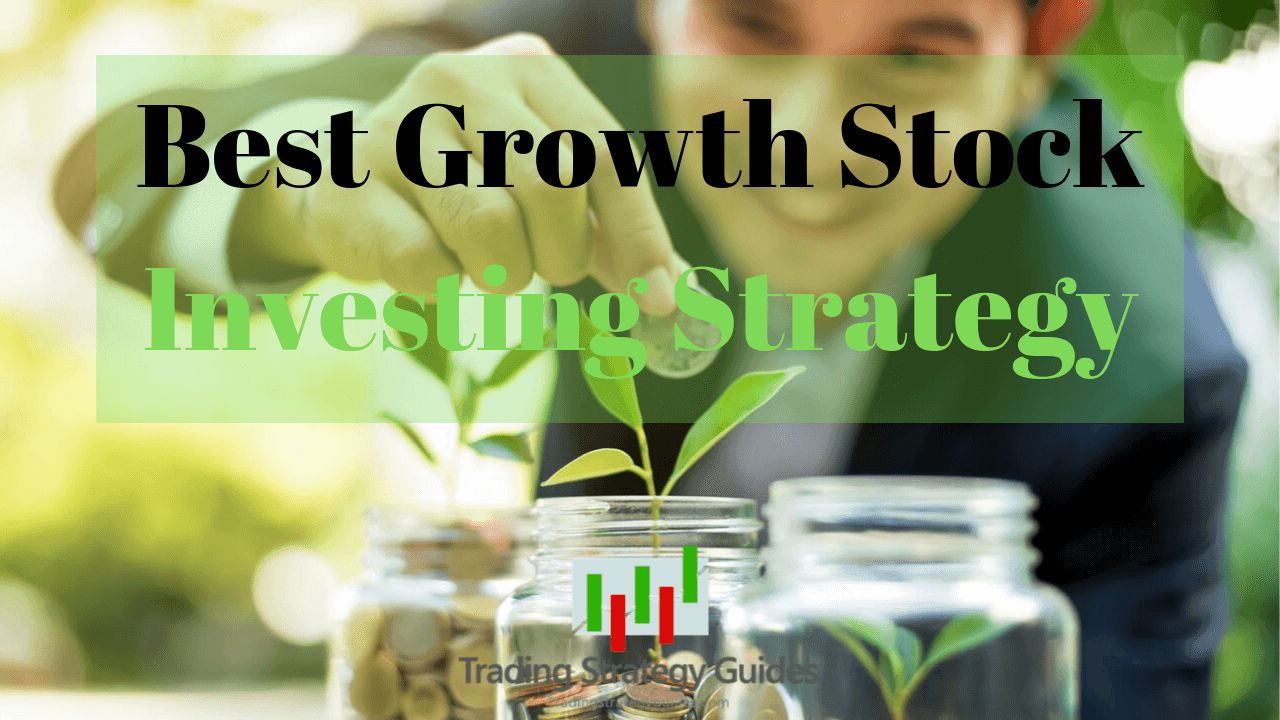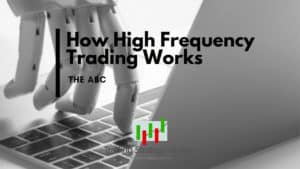Growth Stock Investing 101: Finding The Best Growth Stocks

This guide is all about the best growth stock investing strategy. Some people call it art, others science, but both are right. There is both an art and a science to find the best growth stocks. The science of investing requires fundamental research.
You must know what a growth stock is and how the underlying business is performing.
The art is in the buying. Growth stocks are hot ticket items because they make investors money. It is easy for their values to become inflated, and for unwary traders to be left in the cold when prices deflate without warning. Successful trading strategies will require a lot of hard work.
The good news is that high-growth investing can be done. Growth stocks are a popular investment vehicle. If someone out there is making money, it may as well be you. All it takes is some knowledge, a routine, a watch list, and the confidence to act when the timing is right.
Table of Contents
3 Types of Stock Growth
Not all growth is good growth for a Growth Stock Investor.
There are three ways a company can grow: Organic, Expansionary, or Acquisitions.
- Organic growth is when business is improving and comparable sales are growing from quarter to quarter or year over year. Organic growth can occur in any business if the conditions are right. Likewise, organic growth can turn negative if conditions change. Organic growth is good, but not the best.
- Expansionary growth is when a business is reinvesting and physically growing its operations. This may be through equipment investment for a manufacturer, larger facilities for processors and packagers, or new locations for a retailer or restaurant. Expansionary growth usually results in low to no EPS, higher debt ratios, or a combination of both. A company with higher debt or poor EPS can be forgiven if the reason is reinvestment and growth.
- Acquisition growth is when a company buys another company. A good example of this is the adult beverage market. Names like Constellation Brands and AB-Inbev have been struggling with organic and expansionary growth for years. They solved that problem by purchasing smaller operators, thereby increasing top-line revenue and bottom-line earnings. Acquisition growth is OK for a dividend investor, but it’s not what a Growth Stock investor prefers.
If you have to settle for only one type of growth in your business, Expansionary Growth is what you want. Expansionary growth can provide the highest returns, names like Shake Shack and Chipotle Mexican Grill come to mind. These stocks started as small, regional operators but are now working on nationwide expansions.
The best type of growth for your high-growth Growth Stock portfolio is a combination of all three. Cintas is a company that has been expanding stores and improving sales. Cintas is no high-profile growth stock by any means, but the combination of organic growth, expansion, and acquisition has driven its share price from $85 to over $265 in the last five years. That’s 215% growth, not counting the dividend it pays.
Growth Stock Investors Know the Flow of the Market
Do you want to know how to find growth stocks?
Get in the flow! You have to know when the market is normal to understand when it isn’t.
Finding the best growth stocks requires developing a trading routine. I know, virtually every trading guru tells you to do this, the difference is that I am not going to sugarcoat things. You can’t just jump into trading and know what’s going on. It takes time to develop a sense of when the market is normal. For more information, read this write-up on how to choose the best trading strategy.
That may sound weird, but you have to know when the market is normal in order to understand when it isn’t. Knowing when the market isn’t normal is the key to success because those are often the best times to buy and sell stocks.
The way I did it was to start reading books, as many as I could, and keep a trading journal. The journal can include anything and everything you learn about trading, in mine I track economic data that comes out from week to week and month to month, along with the movement of the market.
I make my journal entries and investment decisions at the same time every week when I know I will be undisturbed. It’s important for your routine to be easy and effortless. I find mine enjoyable because I like knowing what’s going on in the market, I am eager to see how the stocks on my watch lists are performing.
Developing habits make it easier to overcome the psychological risks of trading. Both greed and fear can cause us to make bad trades. The more we can do to create an objective, repeatable trading strategy, the more likely our portfolios will perform well.
I’ll talk about technical analysis a little later, the point here is that the market movements are driven by fundamentals (long term), economic conditions (midterm) and news (near term). If you want to understand why the market is moving the way it is having an understanding of the fundamental economic conditions is crucial, especially for growth stocks. A company can’t grow if the fundamental or economic conditions are stacked against it.
Finding Growth Stocks Encourages Deeper Market Understanding
Picking growth stocks is not the path to riches you may think it is, but it is the path to deeper market knowledge. Expert market watchers and traders don’t have to “pick” stocks because they are already familiar with most stocks, at least the ones they like to trade. That’s the point I want to make for you. Picking stocks is a good educational tool and one that will help you get more in tune with the market.
Being in tune with the market is my way of saying, “getting in the zone”, or, “finding your zen”. Being in tune with the market means you know why the market did what it did today, why stock “ABC” fell, and why you should be a buyer or a seller.
Another goal of stock picking is to develop your watch lists. Watch lists are lists of stocks that fit the criteria of Growth Stock, or High-Yield Dividend Stock, Industrial Stocks, or Tech Stocks. Choosing a watch list will help improve your growth stock trading strategy. These stocks are the ones you want to learn more about, the ones you want to become in tune with, nothing else matters.
It’s OK to make more than one watch list. There are lots of types of stocks and many types of investing, and you can find Growth Stocks in virtually every market sector. Over time, I have developed watch lists for every sector, I like to update them once per quarter as the earnings cycle ends and keep track of any news in between. Also, read this guide on How to Trade Penny Stocks for Beginners.
Develop High-Quality Watch Lists

It’s easiest to pick a winner if all your choices are good ones.
Watch lists can be built in many ways. Stock screens are one way, but not always the best. Cold screens of numbers that aren’t always accurately reported often turn up duds. A screen for growth stocks might look for EPS growth or revenue growth on a quarter-to-quarter or YOY basis.
Market cap. Set the market for at least $500 million. A $500 million market cap is still small, but large enough to weed out most of the riskiest Growth Stock companies. Click here to more about Trading Risk Management.
Price. The price of the stock doesn’t really matter, but you want to make sure it is a company others want to own. What I do is set the screen for at least $10, if you can’t find what you are looking for lower the threshold. If there are too many choices, you can always raise it.
Volume. The volume of shares traded is an important factor for many reasons. The higher the volume, the more liquidity, which means it’s easier to get in and out at the prices you want. I like to search for at least 1 million shares, average 30-day volume. Higher is better, of course. Lower doesn’t make the stock a no-go, just riskier. Also, learn about the best volume trading strategy.
Revenue Growth. This is a figure you may have to play around with to get the results you want. For real Growth Stock results, forward revenue growth estimates should be above 20% YOY and be long-term in nature, as in not just for one year.
Earnings Growth. This is another figure that you may have to play around with because not all the great, high-growth names have positive earnings or positive earnings growth. Just look at Amazon, it is one of the biggest companies in the world and makes the most money, but doesn’t always post a profit because of reinvestment.
All of these indicators are incredibly useful. I’ve found a great way to develop a growth stock watch list is to see what’s hot in the news. If the market is excited about a stock, you can rest assured it will see big movements, usually to the upside, assuming the growth is positive.
Now, the stocks you find in the news may not be the ones you want to buy because their prices may already be elevated. That’s why you want to look at their peers. Any worthwhile stock market trading platform will list a company’s peers. That list is where I find many of my best picks.
When building your watch list for Growth Stocks, be wary of financial engineering. A true growth stock will be able to produce sustained quarter-to-quarter and year-over-year revenue and earnings growth without share buybacks. Share buybacks are great, they help concentrate shareholder value, but if that’s the only reason EPS is growing that stock should be discarded.
Growth vs. value investing and the winner is growth investing and this is because growth stocks appreciate in value much faster. The hard part about growth investing is finding the right growth stocks.
My watch lists grow, shrink, and evolve over time. I add stocks as I find them, or cut them out as I delve deeper into the available information, and find things I don’t like. Over time, they reached a point where it wasn’t about what I was going to buy, but when I was going to buy each stock on my list.
Finding The Best Growth Stocks Takes Patience

Follow the trend and not the crowd.
Once your watch list is developed, you have to watch it. Watching it means keeping up with the news, tracking prices on the charts, and waiting for the right timing. One of the hardest things about trading and investing in Growth Stocks is the market itself. Growth Stocks are exciting, good news usually generates a buzz, a good buzz in the market leads prices higher because it attracts new money. The bad news is that, if you follow the crowd, you won’t be getting the best prices.
The number one lesson I’ve learned over the years, and this is true with any kind of investing or trading, is patience. You have to wait for the right time in order to get the best prices. The best time to get the best prices in a growth stock is often the hardest time to pull the trigger. To make the decision to buy.
Why? Because it takes bad news or disappointment to drive prices lower. A growth stock is driven higher by hope, dreams, and euphoria more than anything else. Yes, it takes good fundamentals too but the price of the stock doesn’t trade on today’s earnings, it trades on what the market thinks the company will earn tomorrow, next month, and next year.
What a good growth stock investor and trader wants is news that alters the outlook for the future. Not in a bad way, just enough to alter the outlook for the future so the market resets. When the market resets its expectations will change and that can result in a sharp, often quick, drop in prices.
Growth Investors Buy When Prices Are Low
Technical analysis is the name traders give to the art of chart watching and market timing. There are literally thousands of ways to analyze the market with Technical Analysis, the only ones that really matter are trend and support/resistance. The trend is the direction in which a stock’s price is moving, support and resistance are price levels at which the trend changed or volume was high.
If you aren’t sure about a level of support or resistance, or if a trend is strong or not, check the trading volume. Trading volume is by far the best indicator of the direction of a stock’s price. If the volume is increasing while the price is moving higher, it is a sign of increasing demand and a high likelihood the trend will continue to rise. There is a big difference between growth investing vs. value investing, which many people don’t know about. We prefer growth investing because it has shown value vs. growth stocks performance, growth will win every time.
There are a couple of indicators with growth stock investing I like to use to help me determine trend, trend strength, and support and resistance. Those are stochastic and MACD. MACD measures the momentum of a stock’s movement via the convergence and divergence of two moving averages. Stochastics assume day-to-day price movement is random within a general trend. It tracks those random movements in order to determine the direction, strength, and health of underlying market trends.
A dip in stock prices within an uptrend that is soon followed by bullish signals in MACD and stochastic is one of the most powerful technical entry signals I know.
Keep The Big Picture in Sight With Growth Stock Investing
I know it may seem impossible to develop a growth stock trading strategy, but it’s not. All it takes is a little dedication and patience, and a lot of interest. The goal is finding and investing in Growth Stocks. The method is developing a trading routine that involves reading, education, research, stock screens, watch lists, and eventually purchases.
Finding profitable Growth Stocks is easy. The hard part is selling them.
One of the first things I learned when I started trading is you don’t make money until you sell. It’s one thing to buy a stock and show a profit, it’s something else entirely to sell that stock when you are showing a profit. The same emotions of fear and greed that may keep you out of a possible trade make it equally hard to get out of one.
You think to yourself, “I can make a little more”, except, you rarely do. I learned the hard way that greedy traders do indeed get slaughtered like hogs. It’s better to be fat like a pig and take profits when you can, and that is why I always set targets and stop-losses. Targets tell me when I must take profits. Stop-losses help me know when to exit.
Some traders use a trailing stop loss that follows the stock’s closing price or a moving average, but not me. I like to use those same support and resistance targets for mine. Once a stock’s price moves up to, above, and away from the next higher resistance target, my stop-loss moves up to just below that level.
If a stock is trading in the all-time high territory, I let it go up until a selloff or correction and then move in when new support is established. If you’re interested in moving averages, read more about the Exponential Moving Average Strategy.
Conclusion – Growth Stock Investing 101
In the end, it’s all about profits. If you find a company with profits on the rise from organic growth, acquisition growth, or expansionary growth, you’ve found a candidate for your watch list. If the company meets your expectations, other traders will agree with you, and you will see that in the chart and price action. If you watch the stock long enough and get a feel for the market, it will produce a buying opportunity you can take advantage of.
Don’t worry if you miss out on the first opportunity to trade the Best Growth Stock Investing Strategy because there will be many others. Patience is key. The last thing you want to do when finding growth stocks is chase prices higher, that’s a great way to lose money. Once you enter a position, wait for prices to move higher. If you get a selling opportunity (news that causes a sharp upward movement in prices) always take advantage of it. Sell and take your profits.






